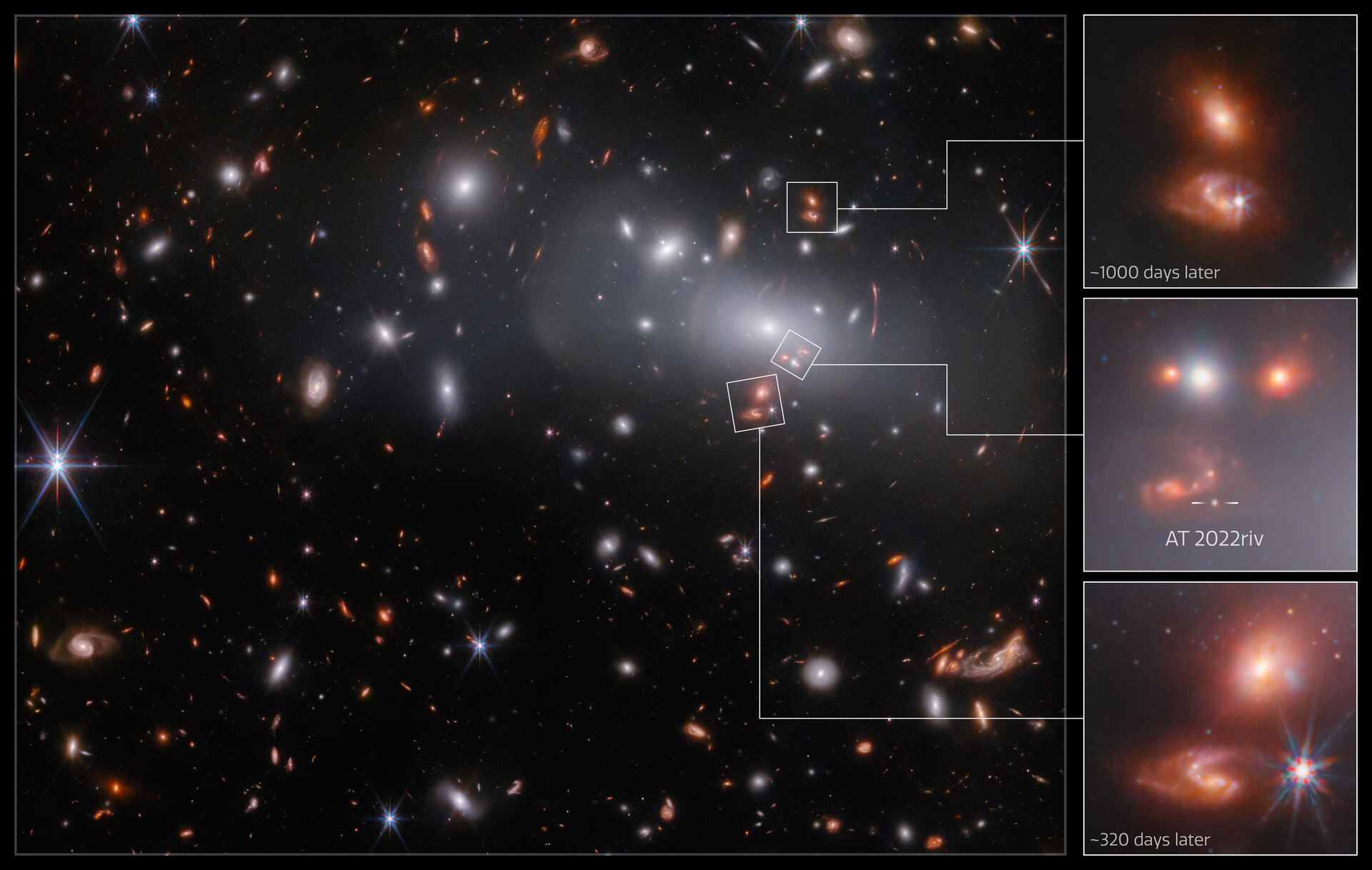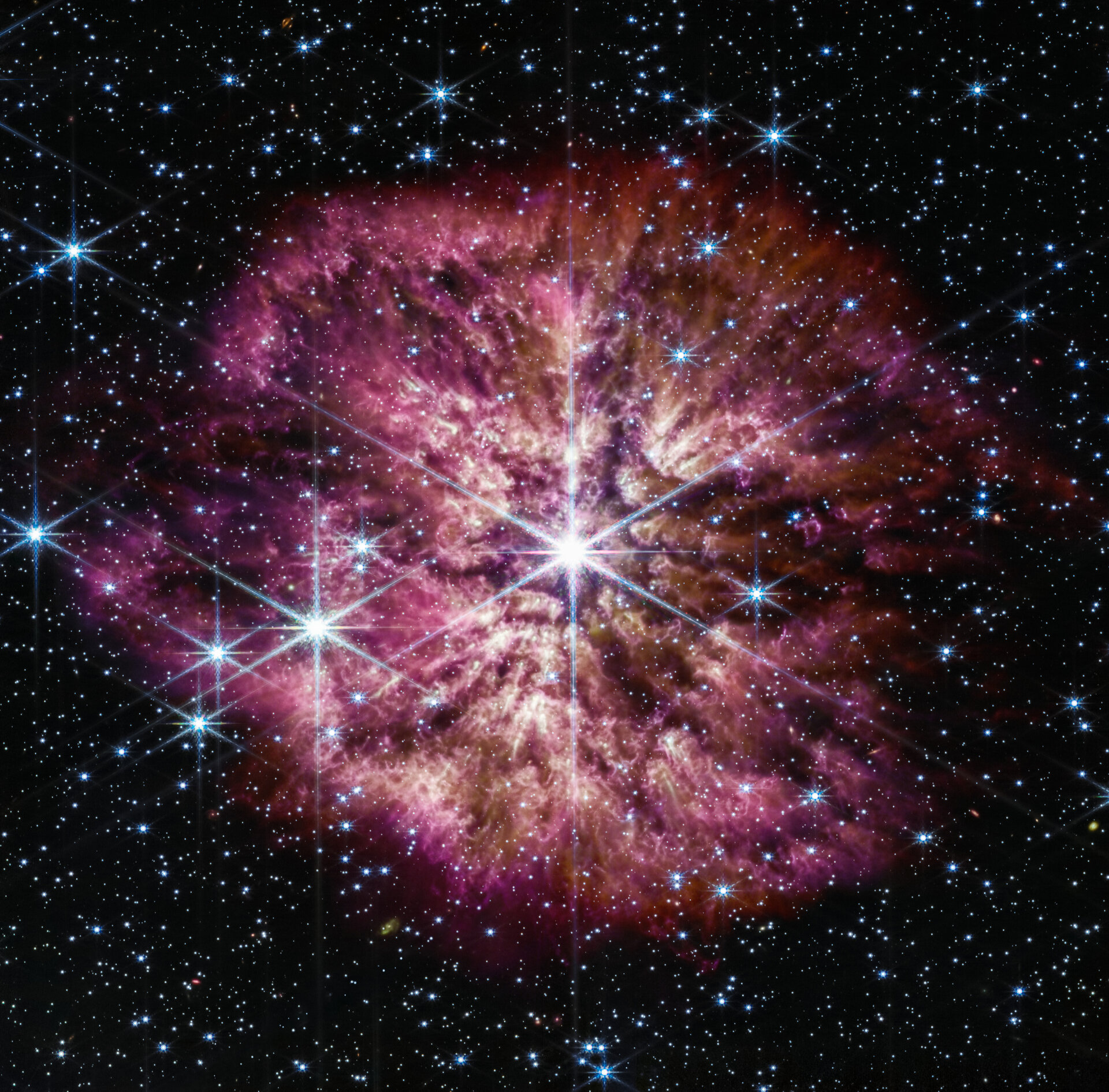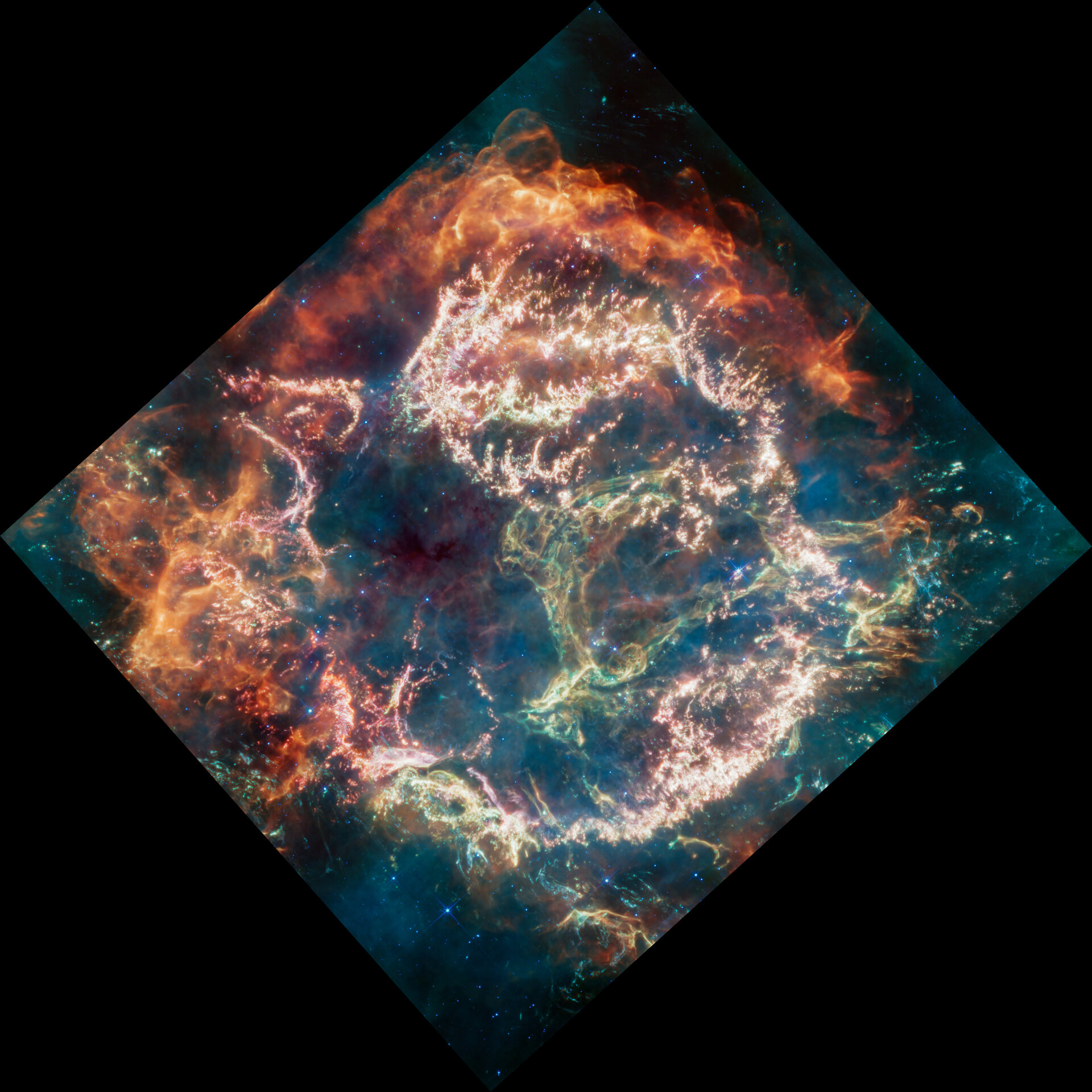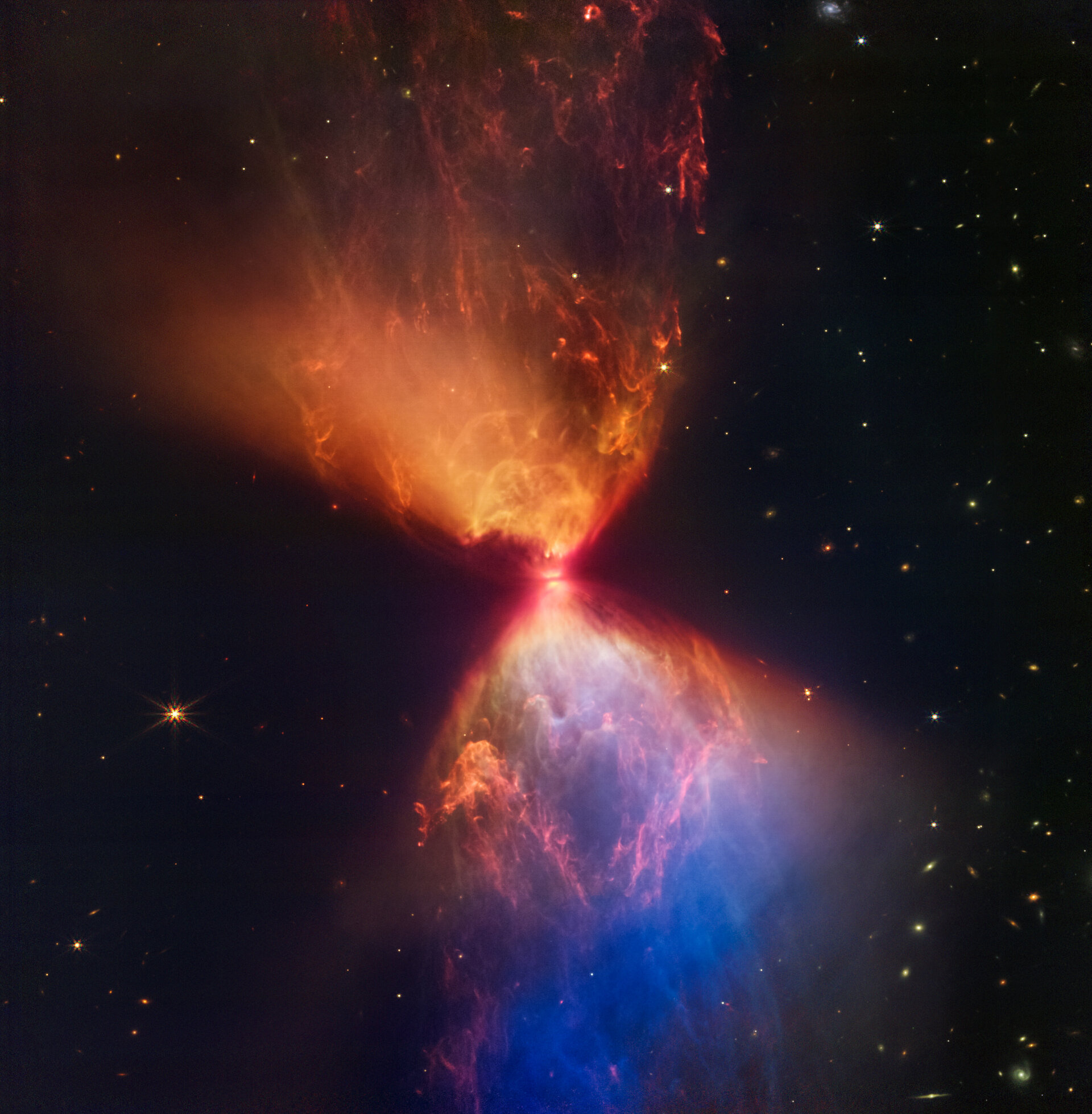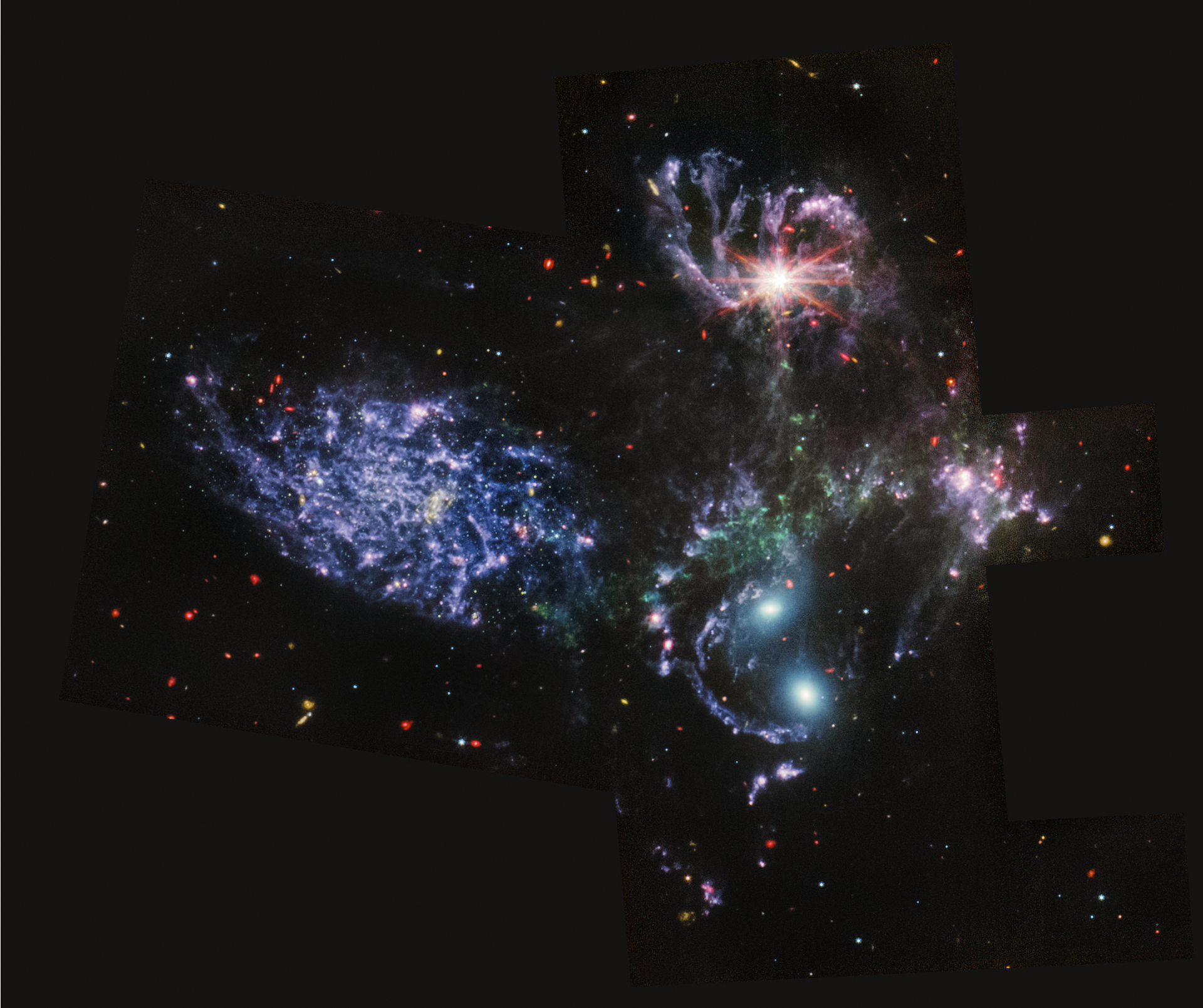This observation from the NASA/ESA/CSA James Webb Space Telescope contains three different images of the same
supernova-hosting
galaxy, all of which were created by a colossal gravitational lens.
Gravitational lensing occurs when a massive celestial body causes a sufficient curvature of spacetime to bend the path of light travelling past or through it, almost like a vast lens. In this case, the lens is the galaxy cluster RX J2129, located around 3.2 billion light-years from Earth in the constellation Aquarius. This annotated image of the cluster highlights the three images of the lensed galaxy, including the one where the supernova was detected.
Astronomers discovered the supernova in the triply-lensed background galaxy using observations from the NASA/ESA Hubble Space Telescope, and they suspected that they had found a very distant Type Ia supernova. These supernovae always produce a fairly consistent luminosity — at the same distance, one looks as bright as any other — which makes them particularly helpful to astronomers. As their distance from Earth is proportional to how dim they appear in the night sky, objects with known brightness can be used as 'standard candles' to measure astronomical distances.
The gravitational lens has created three lensed images of the background galaxy, which are not uniform in size, position or age. Because mass in the galaxy cluster is distributed unevenly, rays of light emitted by the supernova are bent by the lens in different amounts, and so they take longer or shorter paths to the viewer — resulting in separate images. The light that took the longest path gives us the oldest image of the galaxy, in which the supernova is still visible. The next image is of the galaxy as it appears roughly 320 days later than the first one, and the last image roughly 1000 days after the first. At both later points in time, the supernova has already faded from view. The name for the transient is
AT 2022riv.
This observation was captured by Webb's
Near-InfraRed Camera to measure the brightness of the lensed supernova. As part of the same programme,
NIRSpec spectroscopy of the supernova was also obtained, which will allow comparison of this distant supernova to Type Ia supernovae in the nearby Universe. This is an important way to verify that one of astronomers’ tried-and-tested methods of measuring vast distances works as expected.
[
Image description: The main image shows a large elliptical galaxy, surrounded by many small similar galaxies in a cluster, and background stars and galaxies. Three smaller pull-outs show three lensed images of a background galaxy, close up. One is labelled “~1000 days later”, one has a small star marked out as “AT 2022riv”, and one is labelled “~320 days later”.]


